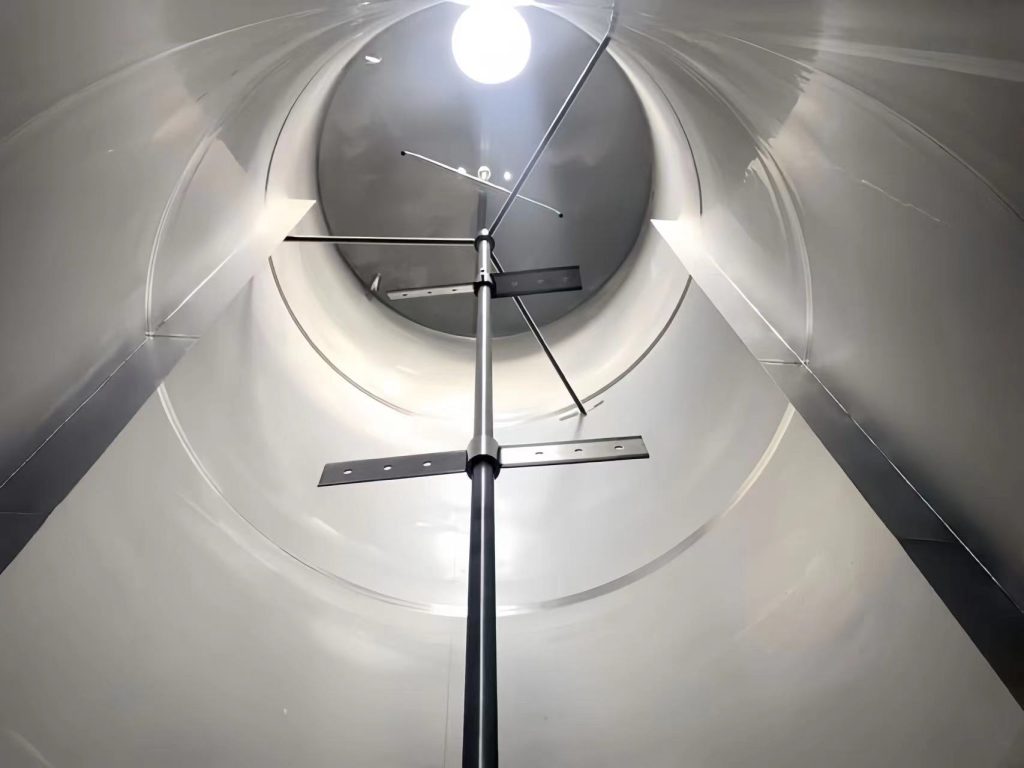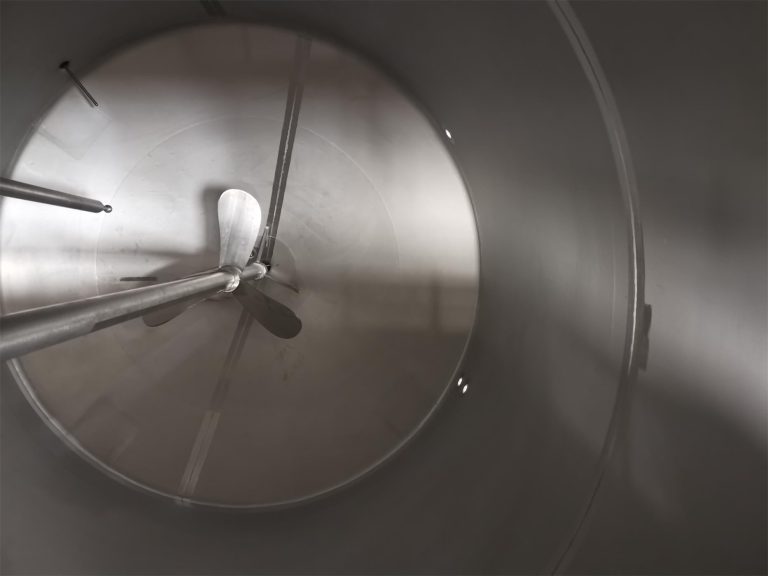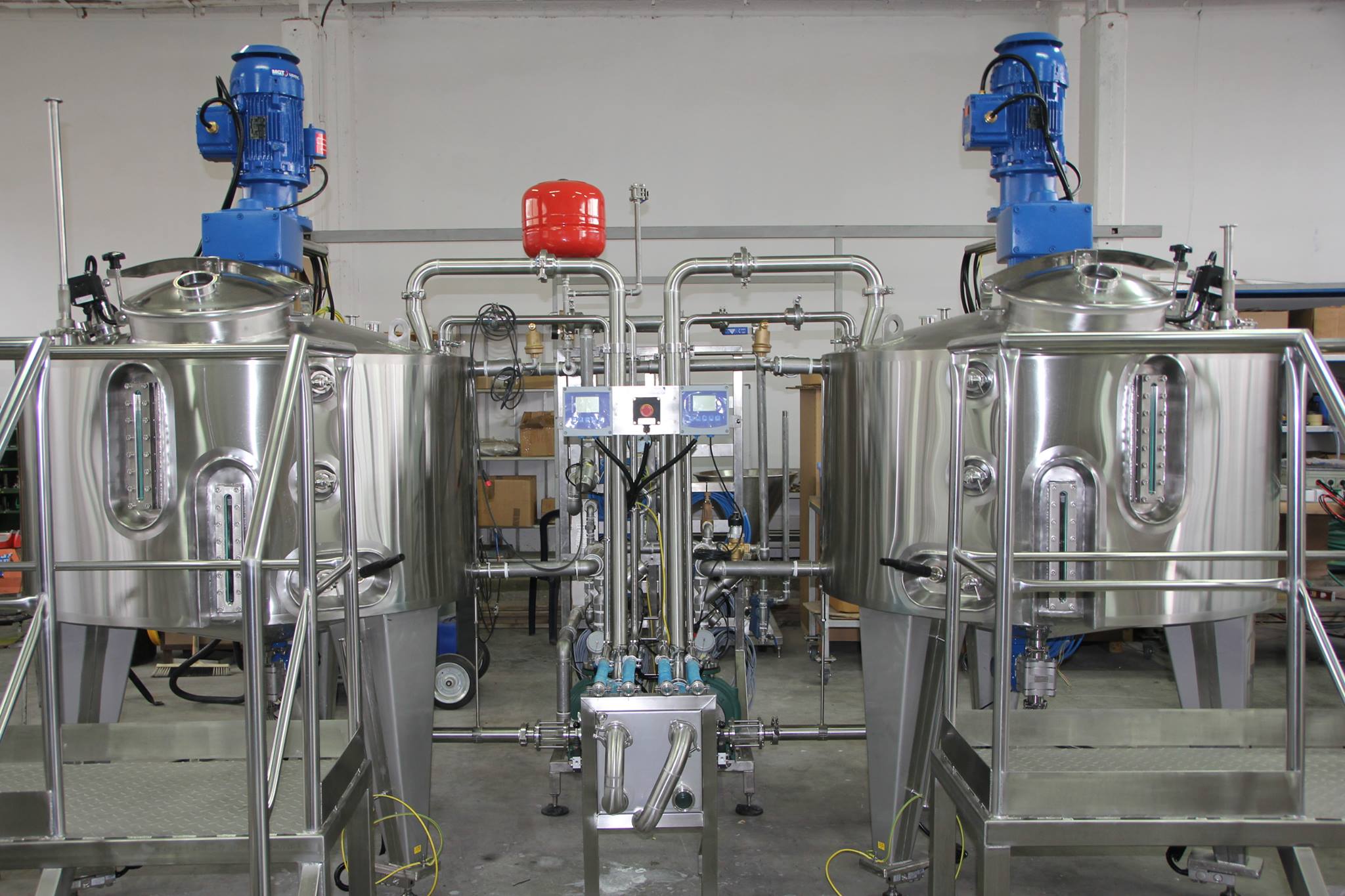導入

化学混合タンクは、さまざまな工業プロセスに不可欠なコンポーネントであり、さまざまな化学物質を組み合わせて目的の反応や特性を実現するために不可欠です。医薬品、化学薬品、食品、飲料、化粧品などの業界で重要な役割を果たしています。化学混合タンクの主な機能と利点を理解することは、操作を最適化し、安全性と効率性を確保する上で不可欠です。この包括的なガイドでは、これらの側面を詳細に検討し、化学混合タンクの機能と利点に関する貴重な洞察を提供します。
理解 化学薬品混合タンク
化学薬品混合タンクは、化学物質を効率的かつ安全に混合するために設計された特殊な容器です。さまざまなサイズと構成があり、特定の産業要件に合わせて調整されています。これらのタンクには、混合プロセスを容易にし、均一性を確保し、関係する化学物質の完全性を維持するためのいくつかの機能が備わっています。
薬品混合タンクの種類
化学薬品混合タンクは、設計、用途、必要な混合の種類に基づいて分類されます。一般的なタイプは次のとおりです。
- バッチ混合タンク: 化学物質の個別バッチを処理するために使用されます。
- 連続混合タンク: 継続的かつ中断のない混合プロセス向けに設計されています。
- 高せん断混合タンク: 粘性材料を扱うための高せん断ミキサーを装備しています。
- タンクブレンダー: 徹底的かつ一貫した混合を実現するブレンド機構を組み込みます。
化学薬品混合タンクの主な特徴
化学薬品混合タンクには、性能と安全性を高めるためのさまざまな機能が備わっています。主な機能は次のとおりです。
- 撹拌機構適切な混合を確実にするために、タービンやプロペラなどのさまざまなタイプの撹拌機が使用されます。
- 温度制御システム: 希望の温度を維持するための加熱および冷却ジャケットが含まれています。
- 構造材料タンクは、多くの場合、ステンレス鋼、ガラスライニング鋼、または化学反応に耐性のあるその他の材料で作られています。
- 安全機能: 圧力リリーフバルブ、防爆モーター、漏れ検出システムが含まれます。
- クリーニングシステム: 衛生を確保し、交差汚染を防ぐための自動定置洗浄 (CIP) システム。
使用のメリット 化学薬品混合タンク
化学薬品混合タンクには、工業プロセスを強化するさまざまな利点があります。これらの利点を理解することで、企業は混合装置について十分な情報に基づいた決定を下すことができます。
効率性と一貫性
化学薬品混合タンクの主な利点の 1 つは、効率的で一貫性のある混合を提供できることです。これは、最終製品が品質基準を満たし、期待どおりに機能することを保証する上で非常に重要です。最新の混合タンクの高度な撹拌機構と正確な制御システムは、この一貫性に貢献しています。
安全性とコンプライアンス
化学薬品混合タンクは安全性を考慮して設計されており、危険な化学物質を取り扱い、事故を防ぐためのさまざまな安全機能が備わっています。また、堅牢な材料と安全機構を使用することで、業界の規制や基準への準拠も確保されています。
柔軟性とカスタマイズ
化学薬品混合タンクは、設計と操作に柔軟性があります。サイズ、撹拌速度、温度制御など、特定のプロセス要件に合わせてカスタマイズできます。この汎用性により、幅広い用途や業界に適しています。
費用対効果
高品質の化学薬品混合タンクに投資すると、長期的なコスト削減につながります。効率的な混合プロセスにより廃棄物が削減され、製品の収量が向上するため、運用コストを削減できます。さらに、これらのタンクは耐久性と信頼性に優れているため、メンテナンスと交換の費用を最小限に抑えることができます。
選択する際の重要な考慮事項 薬品混合タンク
適切な化学薬品混合タンクを選択するには、最適なパフォーマンスと安全性を確保するためにいくつかの考慮事項があります。考慮すべき主な要素は次のとおりです。
化学的適合性
混合タンクの材質は、処理する化学物質と互換性がなければなりません。これにより、タンクの腐食、汚染、劣化を防ぐことができます。ステンレス鋼とグラスライニング鋼は、化学反応に対する耐性があるため、一般的に使用される材料です。
タンクのサイズと容量
タンクのサイズと容量は、生産要件に合わせて調整する必要があります。大型のタンクは大量処理に適しており、小型のタンクはバッチ処理に最適です。将来の成長に対応できるように、タンクの拡張性を考慮することが重要です。
攪拌要件
プロセスによって必要な撹拌の種類は異なります。パドル、プロペラ、高せん断ミキサーなどの撹拌機は、混合する化学物質の粘度と特性に基づいて選択する必要があります。適切な撹拌により、均一な混合と効果的な処理が保証されます。
温度制御のニーズ
特定の化学反応では温度制御が重要です。加熱ジャケットまたは冷却ジャケットを備えたタンクは、望ましい温度を維持し、最適な反応条件と製品の品質を確保するのに役立ちます。
メンテナンスと清掃
メンテナンスと洗浄の容易さは、考慮すべき重要な要素です。自動洗浄 (CIP) システムにより、洗浄プロセスが簡素化され、ダウンタイムが短縮され、衛生状態が確保されます。タンクの寿命を延ばすには、定期的なメンテナンス スケジュールも確立する必要があります。
の応用 化学薬品混合タンク
化学薬品混合タンクは、さまざまな業界や用途で使用されています。これらの用途を理解することで、これらのタンクの汎用性と重要性についての洞察が得られます。
製薬業界
製薬業界では、薬品やワクチンの製造に化学混合タンクが使用されています。一貫性と効能を維持するには、正確な混合が不可欠です。この業界のタンクには、多くの場合、高いレベルの衛生と滅菌が必要です。
化学製造
化学薬品混合タンクは、特殊化学薬品、洗剤、ポリマーなど、さまざまな化学薬品の製造において重要な役割を果たします。この分野では、腐食性物質や反応性物質を処理できる能力が重要です。
食品・飲料業界
食品および飲料業界では、化学混合タンクは原料の混合、香料添加、加工に使用されます。食品安全基準への準拠とさまざまな粘度に対応できることが重要な考慮事項となります。
化粧品・パーソナルケア
化粧品業界では、ローション、クリーム、その他のパーソナルケア製品の製造に化学薬品混合タンクが使用されています。この分野では、消費者の期待に応えるために一貫性と品質管理が不可欠です。
よくある問題とトラブルシューティング

化学薬品混合タンクは信頼性を重視して設計されていますが、動作中に特定の問題が発生する可能性があります。一般的な問題とその解決策を理解することで、最適なパフォーマンスを維持することができます。
漏れとシール
シールの摩耗や不適切な取り付けにより漏れが発生する可能性があります。漏れを防ぎ、化学物質を適切に封じ込めるためには、シールとガスケットの定期的な検査とメンテナンスが不可欠です。
興奮の問題
撹拌機の故障や設定ミスにより、混合が不十分になる場合があります。撹拌機に損傷がないか確認し、撹拌速度や撹拌タイプを調整することで、これらの問題を解決できます。
気温の変動
温度の変動は混合製品の品質に影響を及ぼす可能性があります。温度制御システムが正しく機能していることを確認し、定期的に調整することで、これらの問題を防ぐことができます。
結論
化学薬品混合タンク は、幅広い産業プロセスにおいて重要なコンポーネントです。高度な撹拌機構、温度制御システム、安全機能などの主要な機能は、効率的で一貫した混合に貢献します。これらのタンクに関連する利点と考慮事項を理解することで、企業はニーズに合った適切な機器を選択し、安全性、品質、コスト効率を確保することができます。
化学物質の適合性、タンクのサイズ、撹拌要件などの要素を考慮することで、企業は混合プロセスを最適化し、より良い結果を達成できます。適切なメンテナンスとトラブルシューティングを行うことで、化学物質混合タンクは信頼性の高いパフォーマンスを提供し、さまざまな産業用途をサポートできます。
よくある質問
主な種類は何ですか? 化学薬品混合タンク?
化学薬品混合タンクの主な種類には、バッチ混合タンク、連続混合タンク、高せん断混合タンク、タンクブレンダーなどがあります。各種類は、さまざまな用途と混合要件に適しています。
ニーズに合った適切な化学薬品混合タンクを選択するにはどうすればよいでしょうか?
化学物質混合タンクを選択するときは、化学物質の適合性、タンクのサイズと容量、攪拌要件、温度制御の必要性、メンテナンスの容易さなどの要素を考慮してください。
一般的に使用される材料 化学薬品混合タンク?
化学薬品混合タンクに使用される一般的な材料には、ステンレス鋼、グラスライニング鋼、および化学反応に耐性のあるその他の材料があります。材料の選択は、処理する化学物質によって異なります。
化学薬品混合タンクの安全機能は何ですか?
化学薬品混合タンクの安全機能には、圧力安全弁、防爆モーター、漏れ検出システム、危険な化学物質を扱うための堅牢な構造材料などがあります。
メンテナンスや清掃はどのようにすればよいですか? 化学薬品混合タンク?
メンテナンスと清掃には、シールとガスケットの定期的な検査、撹拌機の機能の確認、衛生のための自動定置洗浄 (CIP) システムの使用が含まれます。メンテナンス スケジュールを確立すると、タンクの寿命を延ばすことができます。

